The Boswash Shareway
Höweler + Yoon Architecture’s vision for the U.S. eastern corridor offers an inspiring glimpse of mobility in 2030


Last week in Istanbul a six month long discourse on the future of mobility in our megacities culminated an impressive showing of concepts from five international architecture firms visualizing their home cities in the year 2030. Organized as a competition by the Audi Urban Future Initiative, the program began in Ingolstadt, Germany in April 2012 with a presentation of research by the firms and ended with the €100,000 Audi Urban Future Award 2012 prize for Boston-based Höweler + Yoon Architecture‘s reimagination of the highway as the “Shareway” that unifies the I-95 corridor between Boston and Washington D.C. into a megaregion called “Boswash.”
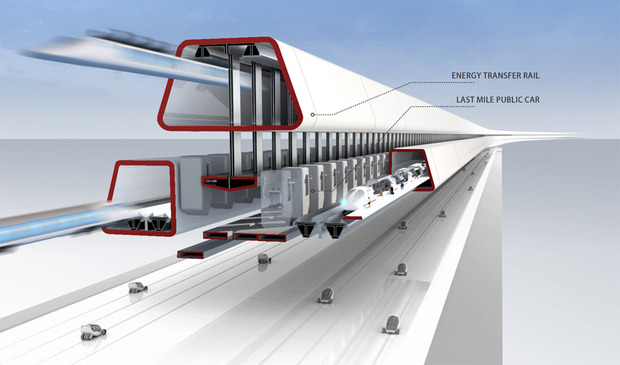
“Infrastructure isn’t the realm of architects but I wanted to push architecture beyond the traditional disciplinary bounds.”
Stretching over 400 miles and encompassing Boston, NYC, Phildelphia, Baltimore and Washington D.C., the Boswash region is home to over 53 million people. While the highway infrastructure is relatively well developed, each city was built independently, leaving significant gaps throughout, minimal connective tissue and few shared resources. The Shareway starts by rethinking mass transit but elegantly extends in to clever solutions on a local, granular level. As Audi’s guest I have had the pleasure to follow this journey over the last six months and along the way had conversations with Eric Höweler about his and Meejin Yoon’s vision to rethink the American Dream. “Infrastructure isn’t the realm of architects but I wanted to push architecture beyond the traditional disciplinary bounds,” he said the morning after winning the prize while reflecting on the overall body of work he and Yoon produced.
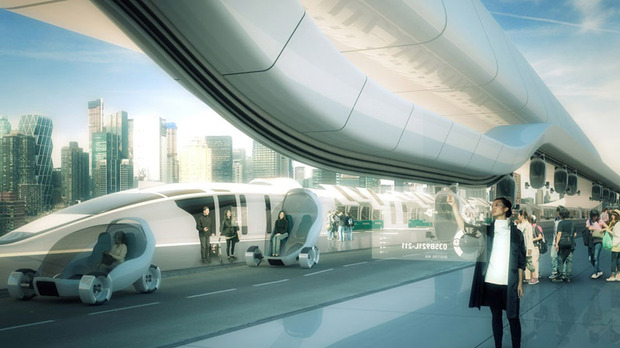
By proposing an interconnection of existing modes of transportation into a single bundle, high speed transportation trains, freight trains, commuter trains, personal cars, bikes and pedestrians can coexist on a multi-level track designed to prevent traffic jams. Recognizing that everyone has different goals for and during their commute, a clever interface allows users to book cars based on desired activity–ranging from the simple quiet, social or business oriented cabins to ones tuned for yoga or lectures. Maximizing sustainability, the trains’ braking as it approaches stations would create kinetic energy to charge Shareway specific cars while in storage. These cars would be available to get from the Shareway station to your final destination and back.
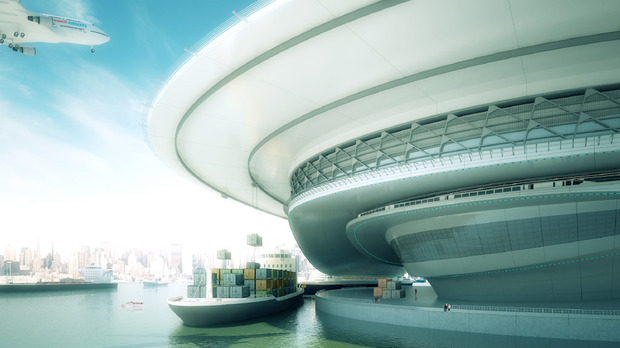
To support the interconnected Shareway, a “Superhub” would be built in Newark and would operate on multiple levels with airport terminals, airport runways, sea port, a rail station and interstate intersection, as well as offering parking and storage. This ultimate consolidation of energy and space would unify trade and travel at an unprecedented level.
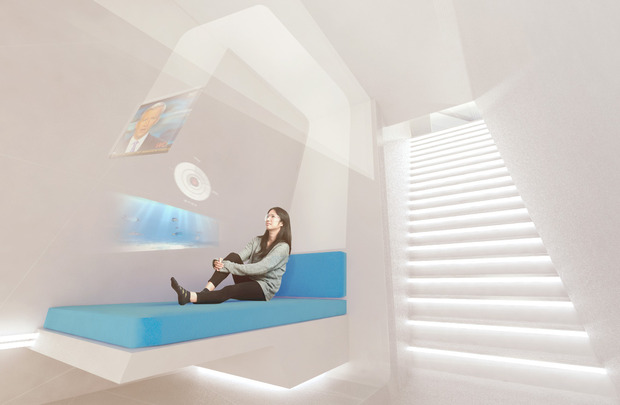
“My students don’t feel they need to own anything; they certainly don’t want to buy a house.”
Transit was only the beginning for Höweler + Yoon’s ideas. The Sharestay model reduces the average rent to $10 per month when residents only pay for the time they’re home. The foreign notion of sharing a home with strangers is slightly mitigated by an app concept that would leverage your social network to find more compatible housemates. Höweler admits that the jury “did have some trouble imaging time sharing a house” and admits that “the Sharestay was an exploration to see how far you can take collective consumption,” but also notes that the younger generation doesn’t have the same dreams we’ve inherited from our parents: “My students don’t feel they need to own anything; they certainly don’t want to buy a house.”

Then there’s Farmshare, a.k.a. Baltimore. Accepting that many parts of that city will never revitalize, why not turn the 722 currently vacant properties into 204 acres of productive agricultural land (capable of producing around 500,000 lbs of wheat flour per year)—all conveniently located alongside the Shareway for efficient distribution.
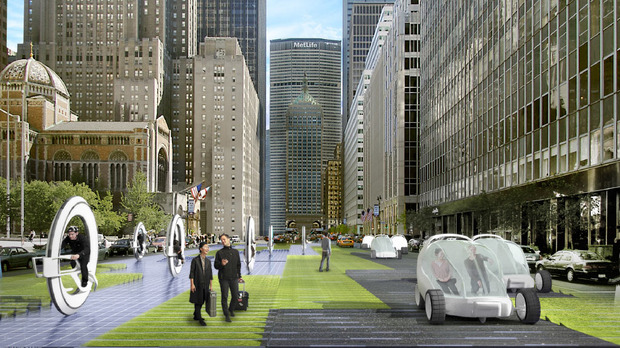
“The Tripanel is trying to ask if we can timeshare the space around your feet. “
Perhaps the most simple innovation the duo proposed is the Tripanel. Rotating between asphalt, grass and photovoltaic cells, spaces can dynamically shift from city street to park to energy source—theoretically on demand and with any combination. “The tripanel is trying to ask if we can timeshare the space around your feet,” Höweler stated. This, among other components of the Boswash plan, has global potential as it offers value that transcends geography and culture.
Though Höweler + Yoon’s work clearly stood out above the rest, each competing firm presented thorough research and smart solutions for transportation, connectivity, accessibility, energy, the environment and economics in their respective cities—CRIT for Mumbai NODE Architecture & Urbanism for the Pearl River Delta, Superpool for Istanbul
and Urban-Think Tank for São Paulo. The diversity of issues between each city far outweighed the commonality and thus a broad range of solutions were presented. Ideas varied from the gamification of transit choices in Istanbul and diagonal tramways spanning building-tops in São Paulo to the development of cloud computing-like shared infrastructure in the underground of Shen Zhen and the activation of citizen-entrepreneurs in Mumbai’s in-between spaces. An exhibition of each firm’s proposal will remain mounted during the first Istanbul Design Biennial through 26 October 2012.
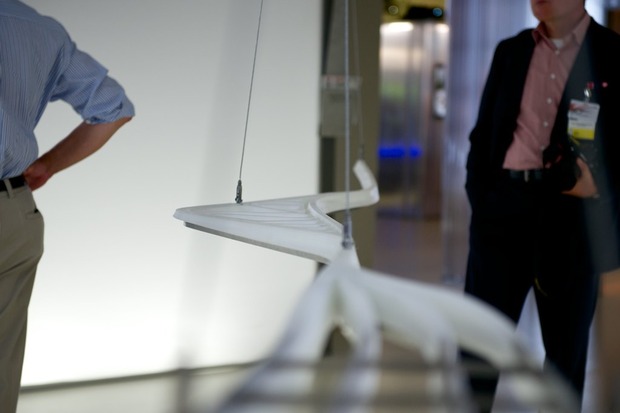
Höweler admits that “these issues are so big they can not be solved by one discipline. Architects help synthesize and visualize the ideas and solutions from economists and planners and others.” Audi has committed to helping Höweler + Yoon take the Shareway concept to the next level and we’re excited to see where that leads.
Höweler +Yoon’s Boswash Shareway is beautifully summarized in their overview video.
What do you think?












